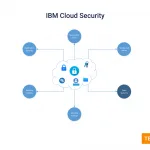Business Analytics is a set of processes and tools used to understand, monitor, and optimize the performance of a business. Business Analytics includes activities like data mining, market survey, market analysis, and financial modeling to name a few.
In a transformative era for businesses, the adoption of Business Analytics has emerged as a key driver for profitability and efficiency gains. Companies leveraging this process witness notable improvements in profitability, cycle times, and brand loyalty, solidifying its status as a strategic management essential.
Highlighting the impact within marketing, a recent Forrester study unveiled that 44% of B2C marketers harness big data and analytics, resulting in a remarkable 36% boost in responsiveness. This shift not only opens doors to heightened growth prospects but also enables the creation of highly targeted campaigns, addressing pain points effectively for marketing professionals.
Moreover, insights from McKinsey and Company emphasize the monumental changes Business Analytics brings to marketing and sales departments, presenting myriad benefits.
A survey conducted by the firm suggests that an integrated analytics approach can liberate 15-20% of a company’s marketing budget, potentially unlocking substantial resources for further strategic initiatives.
The adoption of advanced analytical techniques, such as marketing mix modeling, offers a sophisticated means to assess spend effectiveness across diverse channels.
By statistically correlating marketing investments with sales drivers and incorporating external factors like promotions and competitor activities, organizations gain deeper insights into consumer interactions.
Furthermore, the utilization of statistical modeling, regression techniques, and algorithms enables precise identification of online touchpoints leading to conversions, surpassing traditional attribution methods.
McKinsey estimates a global reinvestment potential of up to $200 billion by optimizing marketing expenditures through analytics, underscoring its immense value proposition.
Notably, several indicators highlight suboptimal allocation of marketing budgets, including inefficient advertising campaigns and misallocation of funds across channels.
Business Intelligence (BI)
Business Intelligence (BI) is often used together with business analytics to support strategic decision making. BIN is an acronym for Business Information Management and represents different programs and techniques that are used to collect, manage, analyze, and present business intelligence data. BIN can be defined as the fusion of Business intelligence (BI) and data analysis tools.
The Benefits
One of the main benefits of business analytics is the ability to forecast future trends based on historical data. This results in stronger decision making when it comes to product development and business strategy.
Business intelligence has the ability to draw relevant conclusions from large amounts of aggregate information. By applying statistical analysis, business analytics helps identify profitable trends and identify potential threats to the business and its key stakeholders.
Business intelligence (SEO) on the other hand, is a subset of business analytics. Unlike data analytics, SEO is designed to support a particular business strategy.
The main objective of SEO is to generate internet traffic. With this goal in mind, business intelligence uses various methods of data analysis and research to determine the best ways of increasing website traffic. For SEO, the objective is to have high-ranking sites in search engines like Google, Yahoo, and Bing.
Business intelligence
Business intelligence and data analytics may also be used together. This concept makes a lot of sense because the insights from one tool can also be applied to the other. Business intelligence tools are usually designed for providing insights on marketing strategies. On the other hand, data analytics provide statistics that can be used to support strategic decisions.
Businesses around the world have been utilising data analytics and business analytics tools to solve problems using data mining techniques.
Some examples of data mining techniques include demand segmentation, customer insight, consumer panel analysis, and location-based marketing. These tools help companies identify strong trends and potential opportunities. They help create solutions that can address real-life problems faced by organisations.
Business intelligence and data analytics provide businesses with the ability to make informed decisions in order to improve their bottom lines.
Business leaders must therefore invest in tools and services that are able to give them accurate insights. This will then lead to a better understanding of business trends, which will then lead to improved business strategies and plans.
Also, business leaders should not only seek information and data that will aid them in making strategic decisions, but they should also seek solutions that will allow them to solve problems.
Business Analytics
Business analytics and statistics provide managers with statistical insights which are then translated into actionable intelligence. It is through these insights that companies are able to address issues.
They are a critical part of managing and operating a successful organisation. Therefore, managers who are serious about building effective enterprises should seek expertise from experts in this field.
Statistics
Statistics and analytics are a crucial element for any business. However, business intelligence tools and trends are particularly important in the world today. This is because there are more data and more insights available than ever before.
Furthermore, these insights can help predict what the future could bring in many fields including: stock market, economics, health, and politics. Moreover, these trends and statistics can also provide essential insights into new directions for developing businesses.
Data Mining
Businesses must invest in data mining in order to collect and analyze the relevant information and trends. Data mining is a process that involves using available data and algorithms in order to find connections between entities.
The most common outcome is the discovery of trends. Experts in Business Analytics believe that the key to success lies in identifying trends early. Therefore, they recommend that managers identify emerging trends, develop methods of analyzing the data, and apply strategies based on the identified trends.
In recent years, many companies have made investments in business analytics because they are able to achieve several tangible results. In addition to the benefits derived from data mining, analytics provide managers with important insights into operational aspects of their organisation.
Moreover, Business Analytics makes business decision-making easier because it provides key decision makers with real-time information and evidence. It allows a company to quickly establish and measure operational impact of strategic decisions, determine target market, and optimize resources.
In addition, Business Analytics helps companies reduce costs by improving productivity, reducing the risk associated with unprofitable ventures, and increasing profitability.







